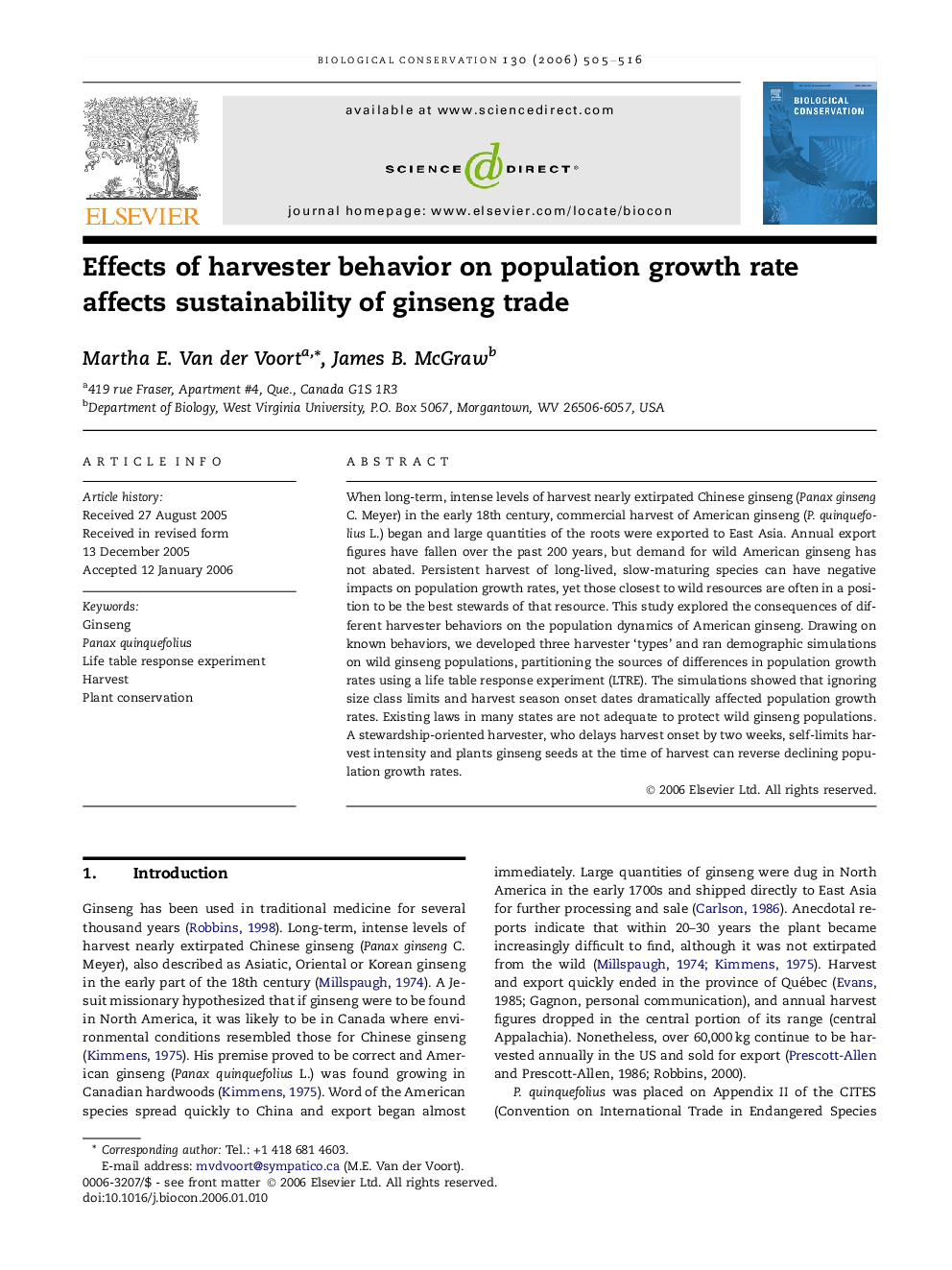| Article ID | Journal | Published Year | Pages | File Type |
|---|---|---|---|---|
| 4387543 | Biological Conservation | 2006 | 12 Pages |
When long-term, intense levels of harvest nearly extirpated Chinese ginseng (Panax ginseng C. Meyer) in the early 18th century, commercial harvest of American ginseng (P. quinquefolius L.) began and large quantities of the roots were exported to East Asia. Annual export figures have fallen over the past 200 years, but demand for wild American ginseng has not abated. Persistent harvest of long-lived, slow-maturing species can have negative impacts on population growth rates, yet those closest to wild resources are often in a position to be the best stewards of that resource. This study explored the consequences of different harvester behaviors on the population dynamics of American ginseng. Drawing on known behaviors, we developed three harvester ‘types’ and ran demographic simulations on wild ginseng populations, partitioning the sources of differences in population growth rates using a life table response experiment (LTRE). The simulations showed that ignoring size class limits and harvest season onset dates dramatically affected population growth rates. Existing laws in many states are not adequate to protect wild ginseng populations. A stewardship-oriented harvester, who delays harvest onset by two weeks, self-limits harvest intensity and plants ginseng seeds at the time of harvest can reverse declining population growth rates.
